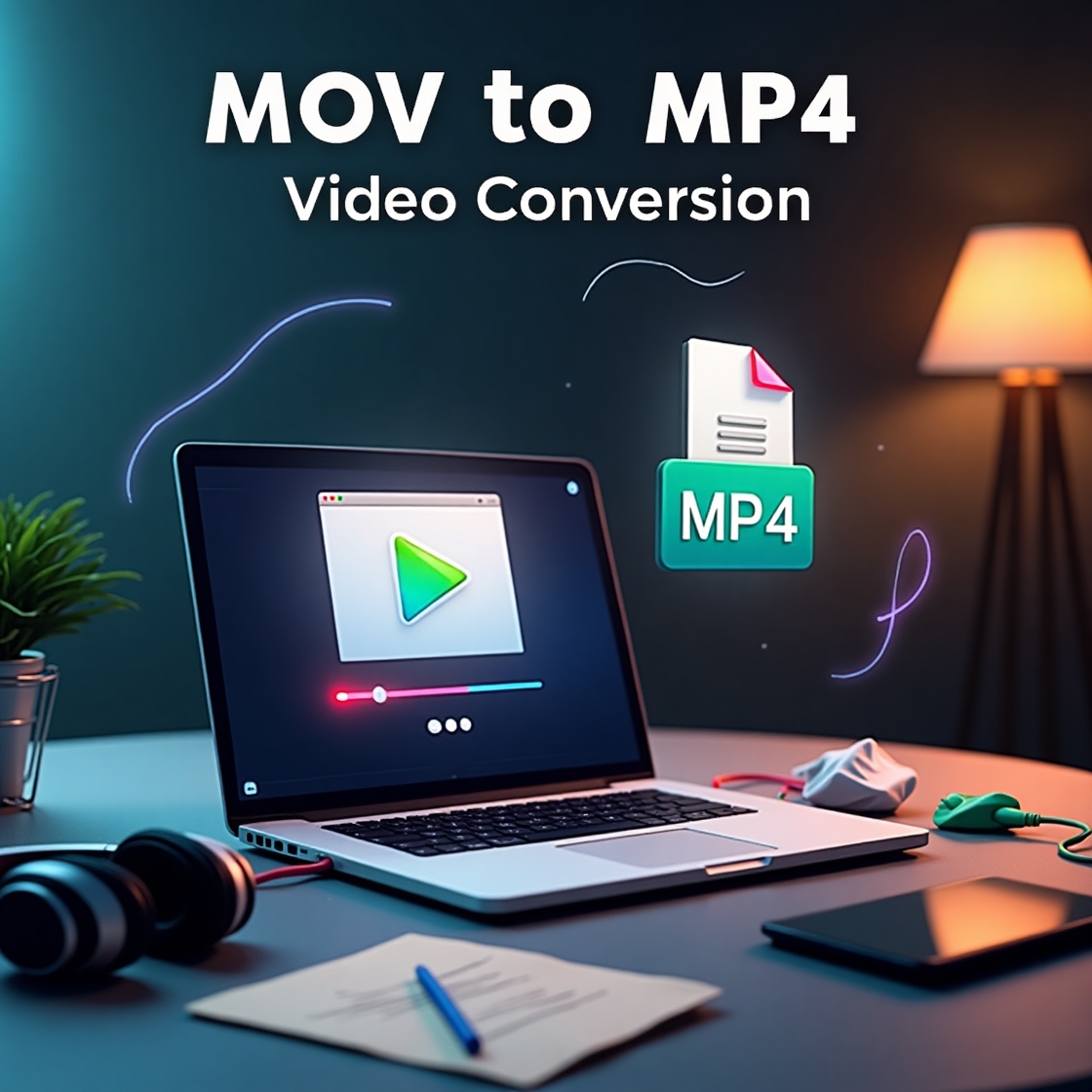Ever wondered why some videos are MOV files while others are MP4s? You’re not alone! The MOV vs. MP4 question pops up frequently—whether you’re editing a project, sharing a clip, or trying to play a file on your device. These file formats aren’t just labels; they determine how your videos perform, look, and play across platforms. Understanding the difference between MOV and MP4 can help you optimize storage, ensure compatibility, and enhance your media experience.
Here’s the good news: if you need to switch formats, a MOV to MP4 converter like the one at ConversionFree.com makes it effortless.
In this article, we’ll break down what MOV and MP4 are, how they differ, and why it matters to you—whether you’re a video editing enthusiast, a casual user, or someone managing media files. Let’s dive in and uncover why this knowledge is a game-changer!
Understanding MOV – The Apple-Centric Video Format
MOV, developed by Apple in 1998, is a multimedia format tied to QuickTime. It’s a container that stores video, audio, and even text (like subtitles), often using codecs like H.264 for video and AAC for audio. Think of MOV as a premium toolbox—designed for Apple’s ecosystem, offering high quality but with some compatibility quirks outside it.
What are MOV file uses? MOV is a favorite for Apple users, often found in iMovie projects, Final Cut Pro edits, or videos shot on iPhones and Mac devices. It’s great for professional editing due to its quality and metadata support. For example, a 5-minute MOV clip in high quality might take up 150 MB—perfect for editing but not always ideal for sharing or playback on non-Apple devices. We’ve seen users struggle to play MOV files on Android or older systems, where compatibility falters.
That’s where a MOV to MP4 converter comes in. If MOV’s Apple-centric nature causes issues, converting to MP4 ensures broader compatibility. Tools like ConversionFree.com’s free online converter make this file conversion seamless. MOV’s strength lies in its quality and Apple integration, but it’s not always the best fit—let’s see how MP4 compares.
"Learn How to Convert MOV to MP4 for Free with ConversionFree.com!"
Understanding MP4 – The Universal Multimedia Star
MP4, or MPEG-4 Part 14, is a widely adopted multimedia format that’s become the standard for digital media. It’s a versatile container that holds video, audio, and text (like subtitles), using efficient codecs like H.264 for video and AAC for audio. MP4 delivers excellent quality while keeping file sizes manageable, making it a global favorite.
What are MP4 file benefits? MP4 is everywhere—YouTube, Netflix, smartphones, and more. It’s ideal for streaming, sharing, or storing videos. That same 5-minute clip? As an MP4, it might shrink to 50 MB while maintaining crisp visuals. We’ve seen MP4s handle everything from 4K travel vlogs to quick Instagram uploads with ease. Its universal compatibility and compression make it a top choice for anyone needing a reliable video converter.
Unlike MOV’s Apple focus, MP4 is platform-agnostic, playing smoothly on almost any device or app. Need to make your MOV files more accessible? MOV to MP4 conversion via ConversionFree.com’s online converter at MOV to MP4 is the solution. MP4’s versatility is its strength—let’s compare it to MOV next.
Key Differences Between MOV and MP4
So, what’s the difference between MOV and MP4? Let’s break it down with a head-to-head media file comparison:
Content: Both MOV and MP4 store video, audio, and text (like subtitles), but MOV is optimized for Apple’s QuickTime, while MP4 uses broader standards for universal appeal. MOV is Apple’s gem, MP4 a global standard.
File Size: MOV files can be larger—around 150 MB for 5 minutes in high quality—while MP4s compress better, dropping to 50 MB with similar quality, thanks to file compression.
Compatibility: MOV shines on Apple devices but struggles elsewhere; MP4 plays everywhere—Android, Windows, TVs, and apps—making it the compatibility king.
Use Case: MOV is for Apple-based editing (e.g., an iMovie project); MP4 is for universal sharing or streaming (e.g., a YouTube video). Picture this: a MOV file of a wedding video shot on an iPhone vs. an MP4 of the same clip. The MOV offers great quality for editing on a Mac, but the MP4 is easier to share with friends on Android. Which is better? It depends on your needs. Need broader access? A MOV to MP4 converter like ConversionFree.com’s free online tool makes it quick. It’s not about one being superior—it’s about the right fit.
"Ready to Make Your Files Universal? Convert MOV to MP4 in Seconds!"
Why It Matters – Choosing the Right Format
Why does the MOV vs. MP4 debate matter? It’s about selecting the best format for your needs—storage, playback, and editing depend on it. Let’s explore the practical side.
Use MOV when you’re in Apple’s ecosystem: editing in Final Cut Pro, working on a Mac, or shooting with an iPhone. It’s a pro choice for quality and metadata—think filmmakers or Apple enthusiasts. But for most users? MP4’s multimedia format wins. Streaming a tutorial, sharing a vlog, or playing on any device—MP4’s smaller size and universal compatibility make it the go-to.
What if your MOV file won’t play on a non-Apple device? That’s where MOV to MP4 conversion steps in. Convert a 150 MB MOV into a sleek 50 MB MP4 for cross-platform sharing or streaming. The online MOV to MP4 converter at MOV to MP4 makes it free, fast, and secure—no software required.
It’s about versatility: MOV for Apple workflows, MP4 for universal use, and a video converter to switch between them. Whether you’re a creator or a casual user, this knowledge saves time and frustration. Try ConversionFree.com today and experience the difference!
Conclusion
The difference between MOV and MP4? MOV’s Apple-optimized quality meets MP4’s universal efficiency. MOV vs. MP4 isn’t a competition—it’s about what suits your needs. Apple editing projects? MOV. Cross-platform sharing or streaming? MP4. Need to switch? A MOV to MP4 converter has you covered.
Take control of your media! Try the free online MOV to MP4 converter at MOV to MP4 and transform your files in seconds. Your perfect video is just a click away with ConversionFree.com!
FAQs
What’s the main difference between MOV and MP4?
MOV is an Apple-optimized video-audio container; MP4 is a universal multimedia format with video, audio, and text.
Why convert MOV to MP4?
To reduce file size, improve compatibility, and make videos playable everywhere—ConversionFree.com’s MOV to MP4 converter does it free.
Can MOV files play on non-Apple devices?
Sometimes, but MP4’s wider support makes it easier—convert MOV to MP4 online for seamless playback.
Which format is better for streaming?
MP4—its compression and compatibility make it ideal for YouTube, Netflix, or mobile streaming.
How does file size differ between MOV and MP4?
MOV can be 150 MB for 5 minutes in high quality; MP4 compresses to 50 MB with similar quality.
Can I use MOV for editing?
Yes, especially on Apple devices, but MP4’s versatility often wins—convert with ConversionFree.com if needed.
Where can I convert MOV to MP4 for free?
Right here at MOV to MP4!
 ConversionFree
ConversionFree
